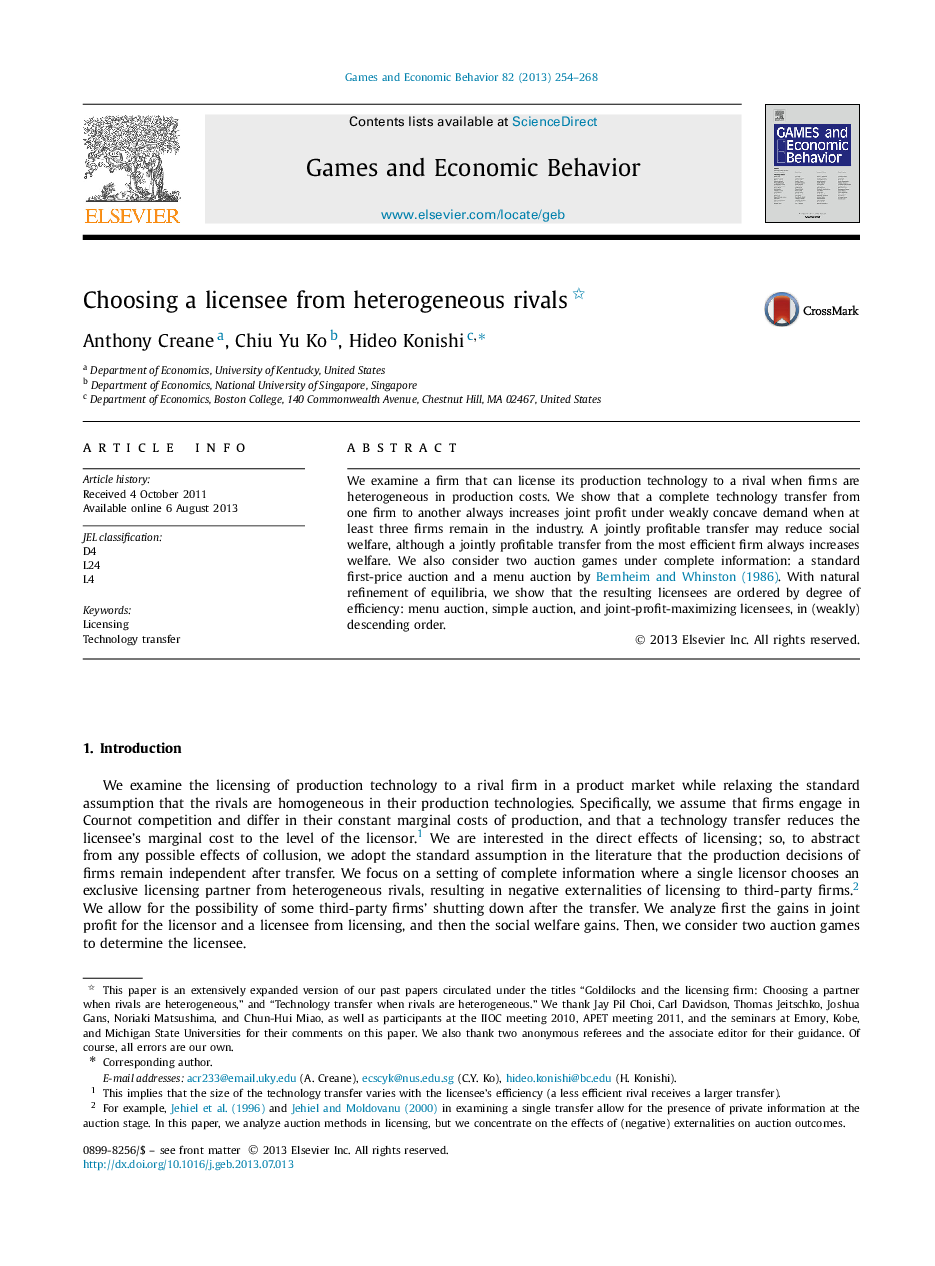| Article ID | Journal | Published Year | Pages | File Type |
|---|---|---|---|---|
| 5071770 | Games and Economic Behavior | 2013 | 15 Pages |
â¢Licensing technology to a rival firm when firms have heterogeneous technologies.â¢If a third firm remains in the industry, licensing technology is profitable.â¢Dependent on criteria, chosen licensees are different.â¢Joint-profit- or welfare-maximization, or auction outcomes as a selection criterion.
We examine a firm that can license its production technology to a rival when firms are heterogeneous in production costs. We show that a complete technology transfer from one firm to another always increases joint profit under weakly concave demand when at least three firms remain in the industry. A jointly profitable transfer may reduce social welfare, although a jointly profitable transfer from the most efficient firm always increases welfare. We also consider two auction games under complete information: a standard first-price auction and a menu auction by Bernheim and Whinston (1986). With natural refinement of equilibria, we show that the resulting licensees are ordered by degree of efficiency: menu auction, simple auction, and joint-profit-maximizing licensees, in (weakly) descending order.
